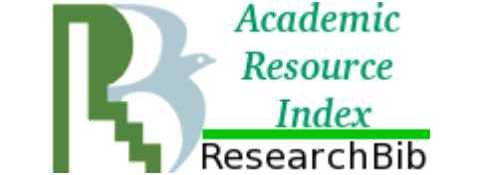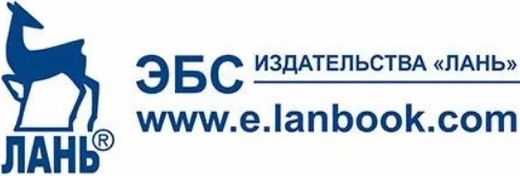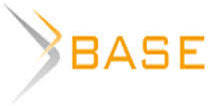THE RELATIONSHIP BETWEEN MINING AND THE STATE OF SMALL AND MEDIUM-SIZED BUSINESSES IN RESOURCE-TYPE REGIONS
The relevance of the research topic is determined by the need to form a balanced growth model for resource-type regions in the context of sanctions. For this, the development of small and medium-sized businesses is significant. However, the relationship of small and medium-sized businesses with mining, as shown by a bibliographic search, is poorly understood. The purpose of the work is to determine the nature of the relationship between mining and small and medium-sized businesses in resource-type regions of Russia. Methods – structural analysis, descriptive statistics, Student’s t-test, paired Student’s t-test, correlation analysis. It has been established that the share of small and medium-sized businesses in resource-type regions is significantly lower. In most regions, it is about 17-18%, while the share of mining is usually 2 times higher. These indicators have a statistically significant negative correlation. At the same time, the low share of small and medium-sized businesses cannot be explained by the resource curse, since in absolute terms it generally corresponds to the average level. In the most severe, sparsely populated regions (Chukotka Autonomous District, Magadan Oblast, Tyumen Oblast), the absolute and relative contribution of mining to the gross regional product is very high. This explains the low relative share of entrepreneurship, the development of which is constrained by low population density, its outflow, spending money outside the region, as well as large income stratification. In more favorable climatic conditions, with a higher population density of the territory (Belgorod region, Udmurt Republic, etc.), more balanced proportions of mining and small and medium-sized businesses in the gross regional product are achieved.

















While nobody left any comments to this publication.
You can be first.
1. Zaretskaya, V.G. and Titkova I.K. (2017), “Diversification of the Russian regions’ economy: measurements and trends”, National Interests: Priorities and Security, 13 (12), 2236–2255.
2. Kryukov, V.A. (2017), “Square of the enclave economy”, ECO, 2, 2–4.
3. Kryukov, V.A. and Shmat, V.V. (2022), “Asian Russia – conditions and obstacles for progressive diversification of the macro-region’s economy”, Spatial Economics, 18 (1), 34–72.
4. Milkin, V. (2022), Russia has found buyers for all the coal that the EU refused [Online], available at: https://www.vedomosti.ru/business/articles/2022/08/17/936482-rossiya-pokupatelei-ugol (Accessed 11 November 2022).
5. National accounts. The share of small and medium-sized businesses in GDP and GRP. (2022) [Online], available at: https://rosstat.gov.ru/storage/mediabank/dolya_MSP_v_VRP.xlsx (Accessed 11 November 2022).
6. Nikiforova, V.V. (2022), “Methodical approaches to the rating assessment of the potential for sustainable development of the mining industry in the northern regions of the resource type”, Regional Economics: Theory and Practice, 20 (10), 1879–1901.
7. On the national development goals of the Russian Federation for the period up to 2030. Decree of the President of the Russian Federation of May 21, 2020 [Online], available at: http://kremlin.ru/events/president/news/63728 (Accessed 11 November 2022).
8. Antonova, M.P., Barinova, V.A., Gromov, V.V., Zemtsov, S.P., Krasnoselskikh A.N., Milogolov, N.S., Potapova, A.A. and Tsareva Yu.V. (2020), Razvitie malogo i srednego predprinimatel'stva v Rossii v kontekste realizatsii natsional’nogo proekta [Development of small and medium-sized businesses in Russia in the context of the implementation of the national project], Delo Publishing House, Moscow, Russia.
9. Sevastyanova, A. E., Tokarev A. N. and Shmat V.V. (2017), “Features of the application of the concept of inclusive development for resource-type regions”, Region: Economics and Sociology, 1, 213-236.
10. Kryukov, V.A., Sevastyanova, A.E., Tokarev A.N. and Shmat V.V. (2017), “Modern approach to the development and selection of strategic alternatives for the development of resource regions”, Economics of the region, 13 (1), 93–105.
11. Tsivileva, A.E. and Golubev S.S. (2022), “Influence of sanctions on the work of coal industry enterprises”, Coal, 8, 84-91.
12. Auty, R. (1993), Sustaining Development in Mineral Economies. The Resource Curse Thesis, Routledge, London.
13. Fleming, D.A., Measham, T.G. and Paredes D. (2015), “Understanding the resource curse (or blessing) across national and regional scales: Theory, empirical challenges and an application”, Australian Journal of Agricultural and Resource Economics, 59 (4), 624-639.
14. Gherghina, Ș.C., Botezatu, M.A., Hosszu, A. and Simionescu L.N. (2020), “Small and medium-sized enterprises (SMEs): the engine of economic growth through investments and innovation”, Sustainability, 12 (1), 347.
15. Gritsenko, D. and Efimova E. (2020), “Is there Arctic resource curse? Evidence from the Russian Arctic regions” Resources Policy, 65 (1), 101547.
16. John, J.D. (2011), “Is there really a resource curse? a critical survey of theory and evidence”, Global Governance, 17 (2), 167–184.
17. Klyuev, N.N. (2019), “The spatial analyses of natural resources use in Russia for 1990-
2017”, Geography, Environment, Sustainability, 12 (4), 203-211.
18. Lashitew, A.A., Ross, L.M. and Werker, E. (2021), “What drives successful economic diversification in resource-rich countries?”, The World Bank Research Observer, 36 (2), 164-196.
19. Pahnke, A., Welter, F. and Audretsch, D.B. (2022), “In the eye of the beholder? Differentiating between SMEs and Mittelstand”, Small Business Economics, 59 (3).
20. Pellegrini, L., Tasciotti, L. and Spartaco A. (2021). “A regional resource curse? A synthetic-control approach to oil extraction in Basilicata, Italy”, Ecological Economics, 185, 107041.
21. Ross, M.L. (2015), “What have we learned about the resource curse?”, Annual Review of Political Science, 18, 239-259.
22. Sachs, J. and Warner, A. (1997), “Fundamental sources of long-run growth”, The American Economic Review, 87 (2), 184–187.
23. Sachs, J. and Warner, A. (2001), “The curse of natural resources”, European Economic Review, 45 (4), 827-838.
24. Venables, A.J. (2016), “Using natural resources for development: why has it proven so difficult?”, Journal of Economic Perspectives, 30 (1), 161–184.
The work was carried out within the framework of Agreement No. 075-15-2022-1195 dated 30.09.2022, concluded between the Ministry of Science and Higher Education of the Russian Federation and the Federal State Budgetary educational institution of Higher Education "Kemerovo State University".